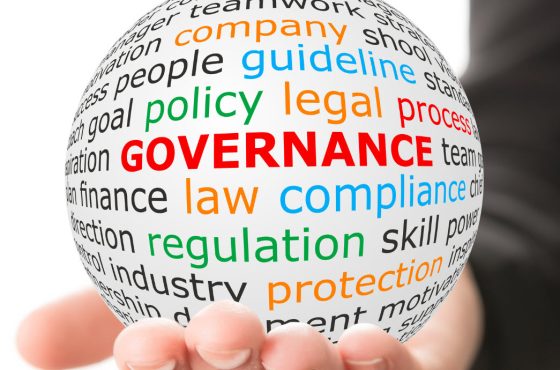Why is Incident Reporting and Investigation a Vital Component of Workplace Safety?
Incident reporting lets workers report an accident or a near-miss incident. The goal is to promote safety and prevent future incidents by learning from past events. Did you know that incident reporting is one component of workplace safety?
Incident reporting helps organizations make informed decisions for employee training and safety programs. Investigations may identify training gaps and can provide businesses with a corrective action roadmap.
Train your investigative team to capture all details of the incident including:
- the location,
- date and time,
- persons involved,
- equipment used,
- nature of injuries, and
- the root causes of the incident.
Once the investigation is complete, analyze the data to identify the root cause(s). An impartial review builds employee trust and encourages safe behaviors.
INJURIES, ILLNESSES AND FATALITIES
According to the U.S Bureau of Labor Statistics, in 2021 fatal injuries increased 8.9% over 2020 from 5,190 to 4,764. The 3.6 fatal occupational injury rate in 2021 is the highest annual rate since 2016 – that means a worker died every 101 minutes from a work-related injury in 2021. In 2021, there were 2.6 million non-fatal injuries
How Investigations can Impact Organizations:
- Identify root causes: Incidents rarely occur in isolation. Carry out an investigation to determine underlying causes and areas that need improvement.
- Corrective action plans: After identifying the cause(s), develop a corrective action plan. Make systemic changes in policies and procedures, training, and education.
- Reduce future incidents: Put proactive measures in place. A proactive vs. reactive safety culture can reduce injuries and prevent costly expenses.
- Communication plans: Develop a communication plan. This will help employees know what to do and will foster a culture of safety.
Using Incident Reporting and Investigation as Tools to Enhance Safety Culture:
Policies and procedures plus attitudes and behaviors all contribute to a safety culture. A safe workplace culture integrates incident reporting and investigation. It encourages and empowers employees to play an active role.
In the United States laws protect whistleblowers safeguarding employees from retaliation or adverse actions. These ensure employees can report workplace misconduct, violations, or other forms of wrongdoing.
Employers or a designated authority are generally responsible for investigating workplace incidents. Depending on the nature and severity of the incident, these processes will vary.
When incidents happen, insurance companies play a role particularly if workers’ compensation claims are filed. Reporting timeframe and specific reporting requirements can vary. It is important to remember that regulations, industry standards, company policies and the type of injury will dictate timeframes. You may have as little as XXXX or XXX to report an injury. In general, it is advisable to report incidents immediately. This ensures appropriate actions take place.
What Makes an Incident or Injury Reportable? Will it be an OSHA Recordable?
Work incidents considered “reportable” can vary. Some common types of incidents that are often considered reportable include:
- Workplace injuries: Any incident resulting in physical injuries to employees, such as cuts, fractures, sprains, burns, or any other form of bodily harm, are generally reportable.
- Work-related illnesses: Employees are often required to report any work-related illnesses or health conditions. This includes work activities or environment and exposure to hazardous substances may cause respiratory issues, occupational diseases, etc.
- Near misses: Incidents that could have resulted in harm to people, property, or the environment but didn’t. Take these warning signs as a gift. Reporting them can uncover underlying causes and prevent future incidents.
- Dangerous occurrences: Explosions, chemical spills, structural collapses or heavy machinery can be dangerous. They can cause serious injury, death, significant damage to property or the environment.
- Work-related fatalities: Any employee death that occurs on the job must be reported.
Specific reporting requirements and thresholds for reportable incidents can vary depending on the jurisdiction, industry, and company policies. Employers are responsible for defining and communicating their specific incident reporting requirements to employees. Regulatory bodies or government agencies may have their own reporting requirements that could supersede.
What Happens After an Incident? What Steps Should be Taken?
- Investigation and Root Cause Analysis: The employer should conduct a thorough investigation of the incident to identify the root causes and contributing factors. This involves gathering information, examining the workplace conditions, reviewing procedures, and interviewing relevant individuals.
- Corrective Measures: Based on the findings of the investigation, the employer should implement corrective measures to eliminate or control the hazards identified. This may involve modifying work processes, improving safety protocols, providing additional training, or enhancing safety equipment.
- Communication and Training: Employers are responsible for communicating the lessons learned from the incident to employees and providing necessary training to ensure that similar incidents are prevented in the future. This may include reviewing safety procedures, emphasizing best practices, and promoting a culture of safety.
- Documentation: Employers should maintain records of the incident, investigation findings, and the actions taken to address the issue. Documentation is essential for tracking progress, demonstrating compliance, and facilitating future audits or inspections.
Complying with OSHA’s General Duty Clause
The “general duty clause” exists in some occupational health and safety regulations, particularly in the United States under the Occupational Safety and Health Act (OSH Act). The general duty clause places a legal obligation on employers to provide a workplace that is free from recognized hazards that may cause serious injury or death to employees.
Under this clause, employers are expected to take reasonable steps to identify and address potential hazards in the workplace, even if specific regulations or standards addressing those hazards do not exist. Employers have a duty to ensure the health and safety of their employees by implementing appropriate preventive measures, conducting risk assessments, providing necessary training, and maintaining a safe work environment.
It’s important to note that the specific language and application of the general duty clause may vary between jurisdictions, so it’s advisable to consult the relevant occupational health and safety legislation in your specific region to understand the exact requirements and obligations related to incident reporting under the general duty clause.
Following a reported incident, the role of the employer is to take appropriate actions to address and “cure” the issue, meaning to remedy the problem and prevent its recurrence. The specific steps an employer should take can vary depending on the nature of the incident and the applicable regulations or guidelines.
Regulatory bodies such as the Occupational Safety and Health Administration (OSHA) in the United States have the authority to impose penalties on employers who fail to adequately address workplace hazards or who have repeat violations. The fines and penalties can vary depending on the severity of the violation and the jurisdiction.
Incident Investigation and the Role of Insurance Companies
One of the most important questions to ask your insurance agency that people don’t ask according to Robert M Dietzel, ARM, CIC Co-Founder and Principal at KMRD Partners is “when the broker is done saying what is covered, ask them what’s not covered because that is the most important thing you should understand. You should focus your risk mitigation efforts there because you are transferring the risks”
This is a mindset that Ingrid Dunlap, CIC, Risk Manager at KMRD Partners offers her clients, helping them to understand the frequency and severity of claims and how to …….
Embrace a Culture of Safety with the Safety Maturity Life Cycle
Arbill’s Safety Maturity Life Cycle is designed to guide companies on a journey to achieving World Class Safety. The stages represent how a company views an incident. For example,
Preliminary – minor incidents are not reported and few incidents investigate
World Class – all incidents reported and investigated as appropriate – learning is shared widely with workers.
Employee Participation Drives a Safety Culture
By implementing a reporting and investigation system, organizations create an open and transparent environment for any employee to voice their safety concerns. Employees who feel valued and safe are more engaged in their work and produce better results. Safety culture becomes more robust when everyone within the organization plays an active role in identifying, reporting, and investigating incidents. This ultimately promotes the value of safety across the organization and empowers everyone to contribute to safety improvement.
In conclusion, incident reporting and investigation are key components of workplace safety culture. Effective incident management can positively impact productivity, cost reduction, and safety culture. Organizations that recognize and invest in these processes are likely to reap the benefits of a safer, more engaged, and productive workforce.
Written by Ingrid Dunlap (Risk Manager at KMRD Partners)
Additionally For those who missed our webinar on “Incident Investigation and Reporting”, here is a recording!
Our experts discuss how you should respond to incidents, whether large or small and how it has a direct impact on your ability to prevent future occurrences. Ingrid Dunlap (Risk Manager at KMRD Partners) is teamed up Kate Maness (EHS Services Manager at Arbill) to present the information that you need to know to best investigate, report and prevent incidences in the workplace.
WHAT YOU HEAR ABOUT…
- What to report, how to respond and document an incident?
- How will a root cause analysis and a corrective action plan help
prevent future incidents? - How do incidents impact insurance premiums?
- What are the direct and indirect costs?
Hosted by Arbill





